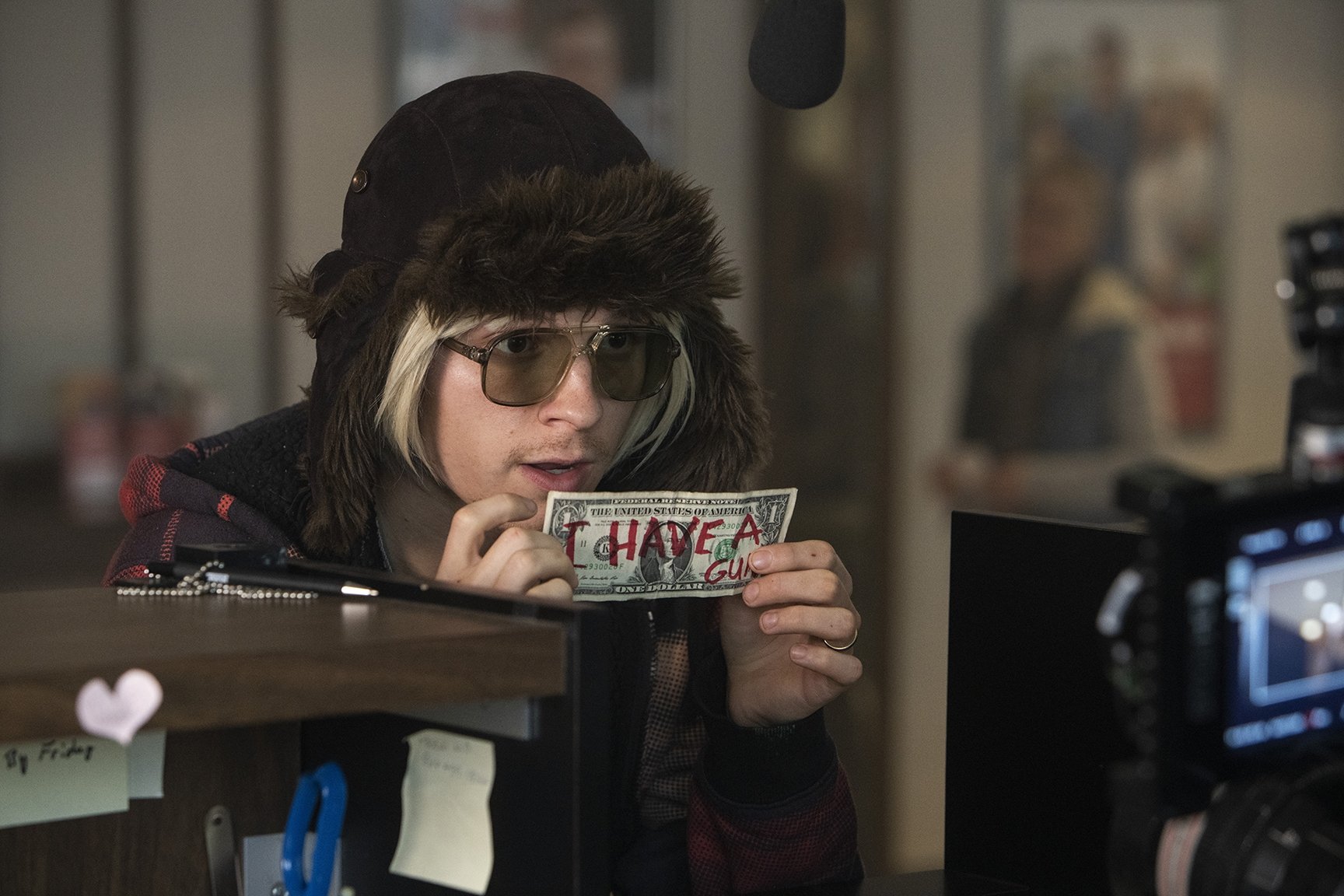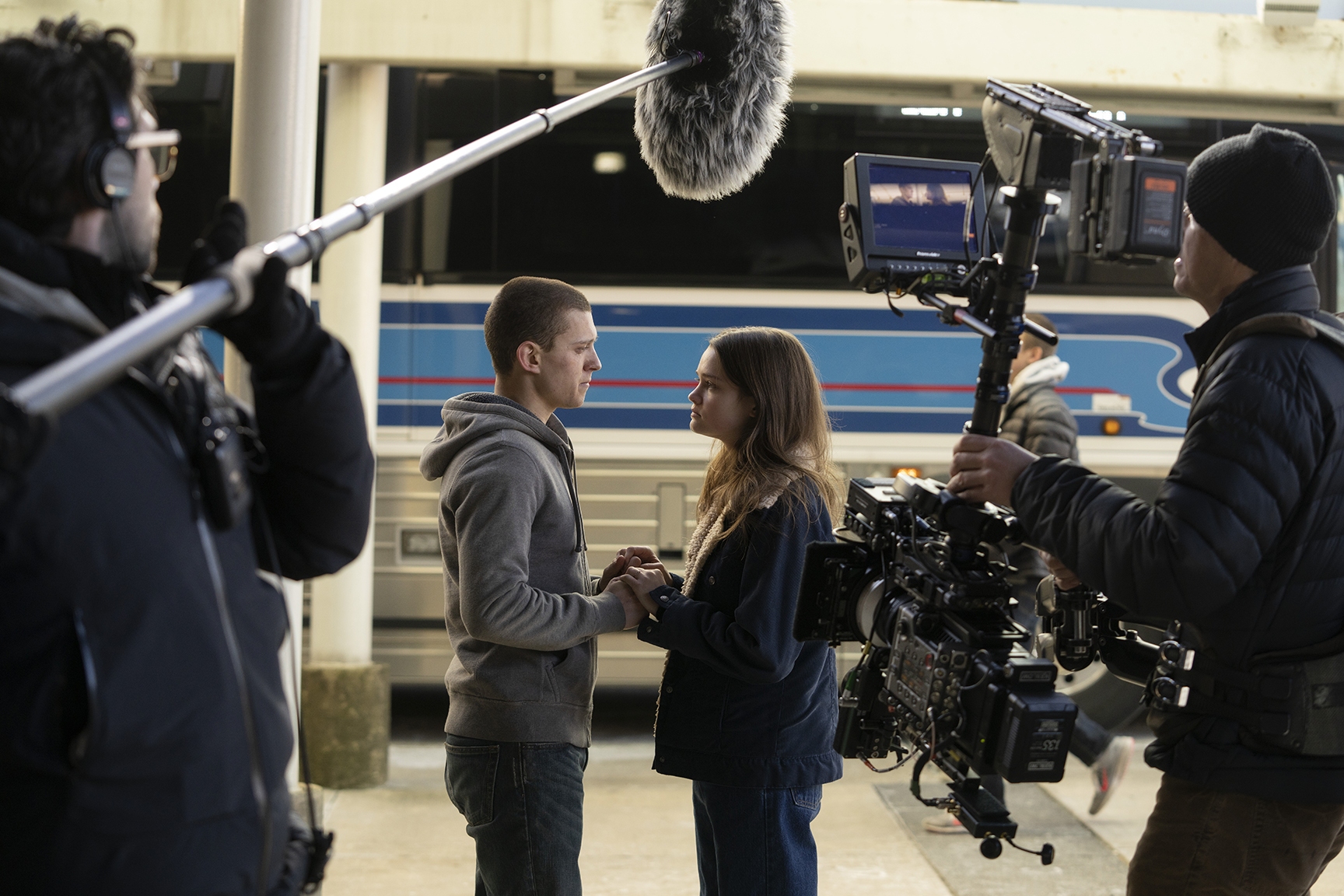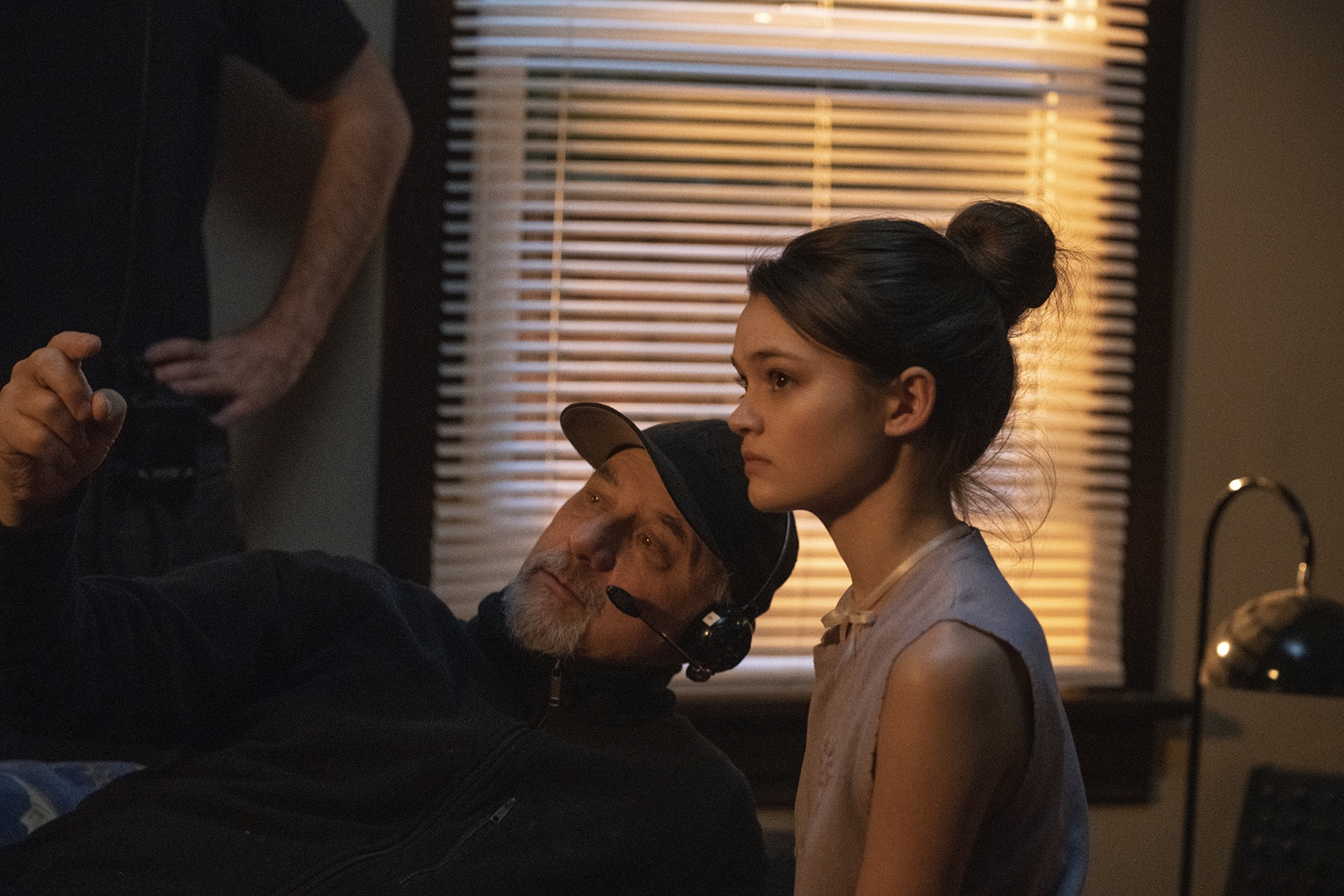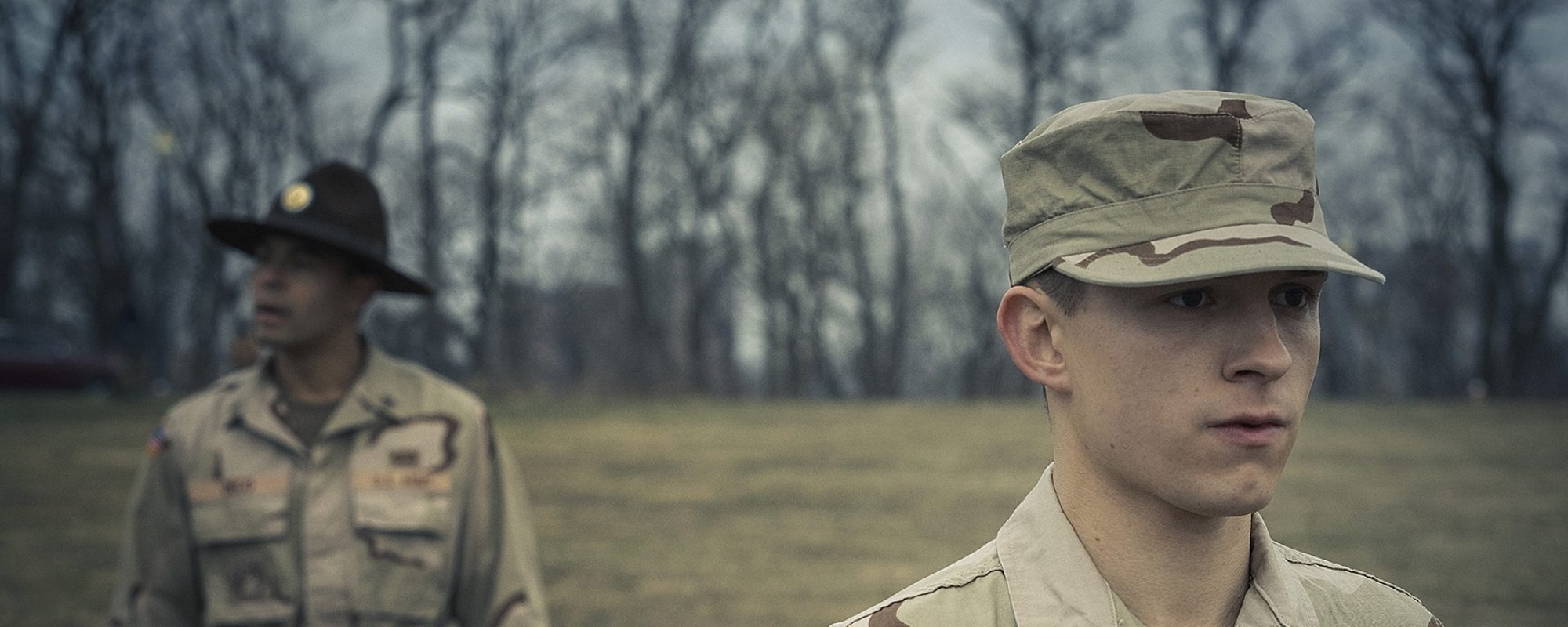All Videos
Clubhouse Conversations — Cherry
Interviewer Lawrence Sher, ASC and cinematographer Newton Thomas Sigel, ASC discuss this experimental drama that conveys the fractured POV of a troubled Gulf War vet.
Adapted from the 2019 semi-autobiographical novel by Nico Walker and directed by Joe and Anthony Russo, (Avengers: Infinity War and Avengers: Endgame), Cherry follows an ex-Army medic (Tom Holland, below) whose life is ravaged by opioid addiction.

Cherry unfolds in chapters, and the Russos wanted each to have its own look and feel, shaped by the protagonist’s state of mind. Joe explains that Cherry’s trajectory begins with him as a college student in love, then shifts to his military training; he subsequently endures the horrors of war, struggles with PTSD, partakes in drugs and criminality, and ultimately finds himself incarcerated.
A creative mandate was to find ways to visualize Cherry’s psychological detachment, a sense of distance from others that recedes when he becomes a criminal. Sigel employed a variety of tools and techniques to accomplish this, including Sony Venice CineAlta and Red Ranger Monstro cameras and a range of optics.
The movie’s emotional spine is Cherry’s relationship with Emily (Ciara Bravo, with Holland, below), and through testing at Keslow Camera, Sigel determined Todd-AO anamorphic lenses should be “the core of our look” he told American Cinematographer. “Nothing else had that romantic, beautiful, creamy, soft fall-off. It’s a fairytale quality I thought was perfect for this story. Each chapter has its own visual recipe, but we start with the Todd-AOs and come back to them.”

After Cherry’s first meeting with Emily, he encounters her at a party, where he’s high on Ecstasy. To convey that euphoria, Sigel shot infrared and color footage simultaneously with a 3ality Technica TS5 stereoscopic rig (using two Red Ranger Monstro cameras and Super Baltar lenses); then, in post, he graded the composited images to progress from a bright monochrome palette to varying amounts of color.

To emphasize the rigors of basic training shown in another chapter, Sigel shot only with a 14mm Sigma and used static shots and grounded, linear camera moves; in addition, the 2.39:1 aspect ratio narrows to 1.50:1, and the warm colors of the preceding chapter drain away.
When Cherry lands in Iraq, the widescreen frame is restored, and Sigel transitioned to Leitz Cine primes and “more neutral color.”

Newton Thomas Sigel (above, with Bravo) began his career as a painter and experimental filmmaker while studying at the Whitney Museum of American Art in New York City. He transitioned to documentaries while covering the Central American wars of the 1980s, which included working on the Academy Award-winning Witness to War: Dr. Charlie Clements and When the Mountains Tremble. Catching the eye of legendary filmmaker Haskell Wexler, ASC, he got his first narrative opportunity on Latino, which led to second-unit work with Oliver Stone and Robert Richardson, ASC on Platoon and Wall Street.
Sigel earned a strong reputation amongst visual storytellers for his work on the crime classic The Usual Suspects. His use of exotic film stocks and innovative negative processing methods on Three Kings laid the foundation to new avenues of cinematography. In 2010, he photographed Nicolas Winding Refn’s Hollywood debut, Drive.
His other feature credits include Blood & Wine, Fallen, Confessions of a Dangerous Mind, Leatherheads, The Brothers Grimm, Towelhead and Marshall. He also collaborated with Yuen Wo-Ping, the grandmaster of martial-arts cinema, on Crouching Tiger, Hidden Dragon: Sword of Destiny; with Robert Redford on The Conspirator; and with Halle Berry on Frankie and Alice.
Sigel most recently spoke to AC about his work in the Queen biopic Bohemian Rhapsody, and was the subject of a previous Clubhouse Conversation episode with writer-director Spike Lee regarding their film Da 5 Bloods.
Born in New Jersey, interviewer Larry Sher attended Wesleyan University, where he studied economics. During the program, he took a course in film history, which sparked his passion for cinema. After graduating, Sher relocated to Los Angeles, where he served as a camera assistant and gaffer before working his way to director of photography.
His credits include Kissing Jessica Stein, Garden State, Paul, The Dictator and Godzilla: King of the Monsters. His most recent feature, Joker marked the sixth collaboration between Sher and director Todd Phillips, following The Hangover trilogy, Due Date and War Dogs. For his camerawork on Joker, Sher earned the Golden Frog at Camerimage and Academy and ASC Award nominations.

You’ll find more episodes in this series here.
Learn more about our new season here.

